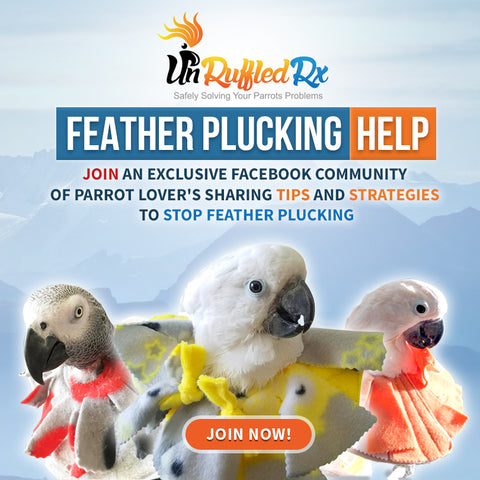- Stock up on needed parrot supplies before your bring your new bird home. You’ll need a bird cage. Not sure about the best bird cage? First, ask the shelter or your breeder about bar space recommendations. This is how far apart the individual bars are on the cage. You don’t want your curious new pet getting its head stuck between the bars. The second consideration is deciding how big of cage you have room for and can afford. HQ Bird Cages are some of the best on the market. Most cages come with cups and a dowel perch. Ditch the dowel perch for more foot healthy styles.
- Next, you’ll want to create a comfortable environment inside the bird cage with appropriately sized cage accessories. You’ll need a variety of appropriately sized perches, maybe 3-4, a bird bed, and 3-5 new bird toys.
- You’ll need some bird food. Ask the shelter or your breeder what they’ve been feeding the bird. Maybe, they’ll give you a weeks’ worth of food. If you plan to switch to one of the vet-recommended diets, learn how to convert your new parrot to pellets and make the transition slowly. Get some treats for your bird, too. Treats will aid in the bonding process and help you know what treats you bird prefers for training purposes.
- Bird food and toys need to be constantly replenished while other parrot supplies may last for years. Avoid buying bird food in bulk for just one or two pets. It may seem like you’re saving money if you buy bird food in bulk, but, remember that all grain and seed based products are prone to harboring nasty pantry moth eggs. Buy only the amount of food that you’ll use within 4-6 weeks to avoid a full blown moth infestation. Also, until you know what diet your bird prefers, it’s best to buy the smallest bags until you know what your parrot likes. Watch to see which toy styles your new parrot prefers. Does it like wood, interactive toys, or foraging toys. Is it a cuddler? Learn about bird play styles here
- Create an area where you can keep your bird supplies organized and handy. Maybe a closet or a sealable plastic tub. Make sure to get a bird first aid kit and keep it handy, too. Keeping your bird supplies organized and in one place will help you retrieve it in case of an emergency or evacuation.
Keep your household as calm and stress free as possible for a good week. Being rehomed is quite an adjustment for a bird and very scary. Your immediate goal is to help your new bird gain trust and settle in as quickly as possible. Your bird may be overwhelmed with all of the life changes for the first few days. Watch to make sure that it is eating, sleeping and observe its activity level.


